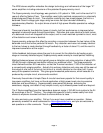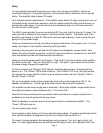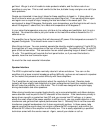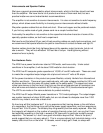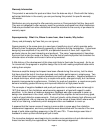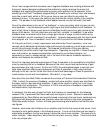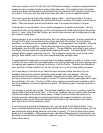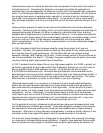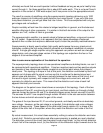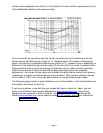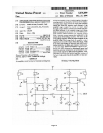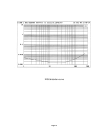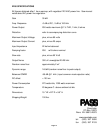Page 5
Interconnects and Speaker Cables
We have a general recommendation about interconnects, which is that they should cost less
than the amplifier. We have tried a lot of products and most of them work well, but as a
practical matter we cannot make blanket recommendations.
The amplifier is not sensitive to source interconnects. It is also not sensitive to radio frequency
pickup, which allows some flexibility in choosing source interconnects without shields.
We prefer speaker cables that are thick and short. Silver and copper are the preferred metals.
If you find any cable made of gold, please send me a couple hundred feet.
Fortunately the amplifier is not sensitive to the capacitive/inductive character of some of the
specialty speaker cables, so feel free to experiment.
We have found that about 90 per cent of bad sounding cables are really bad connections, and
we recommend that special attention be paid to cleanliness of contact surfaces and tight fit.
Speaker cables should be firmly tightened down at the speaker output terminals, but do not
use a wrench. They will not withstand 100 foot-lbs of torque. Hand tightening without
excessive force is plenty.
Fun Hardware Facts
The X250 has a power transformer rated at 1200 watts, continuous duty. Under actual
conditions in the amplifier, it will do about 1800 watts for short duration.
The X250 has 20 computer grade capacitors at 10,000 uF and 50 volts each. These are used
to create the unregulated output stage rails at plus and minus 47 volts at 20 amps.
All the power transistors in the product are power Mosfets, actually Hexfets from International
Rectifier and Harris. These are hyper-matched parts, with gate voltages matched to 0.5% and
all devices taken from the same lot codes (made on the same wafer). The speed and noise
critical gain devices in the front end, (that is to say the actual balanced pair of transistors) are
ultra low noise and distortion matched JFETs having a low (.02 S) transconductance figure.
The JFETs are made on the same substrate for prefect matching.
The X250 has 32 output Mosfet power transistors in TO-3 metal packages. The output stages
can sustain transients of about 6,000 watts, but are not allowed to dissipate more than 1000
watts for any instant, even into a dead short.
So how long will this hardware last? It is my experience that, barring abuse or the odd failure
of a component, the first things to go will be the power supply capacitors, and from experience,
they will last 15 to 20 years. Fortunately they die gracefully and are easily replaced. After that,
the longevity will depend on the number of operating thermal cycles, but I can say that I have
had amplifiers operating in the field in excess of 20 years with no particular mortality except
capacitors. The answer is, I don’t have good information beyond that. More to the point, I
would suggest that you not worry about it. This is a conservatively built industrial design, not a
tweaky tube circuit run on the brink. If it breaks, we will simply get it fixed, so sleep well.




